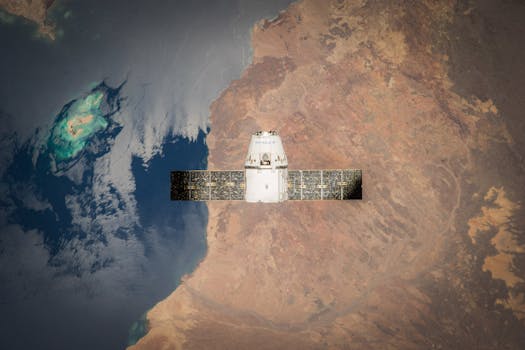
Orbiting Innovations: Exploring the Latest in Earth-Observing Technology with Earth Observing has become a crucial aspect of modern technology, allowing us to monitor and understand our planet like never before. Earth Observing technology has come a long way since its inception, with significant advancements in recent years. The latest innovations in Earth-observing technology have enabled us to collect and analyze vast amounts of data, providing valuable insights into the health of our planet and its ecosystems.
The use of Earth Observing satellites, such as those launched by NASA and the European Space Agency (ESA), has been instrumental in monitoring climate change, tracking weather patterns, and observing natural disasters. These satellites are equipped with advanced sensors and cameras that capture high-resolution images of the Earth’s surface, allowing scientists to study the planet’s land, oceans, and atmosphere in unprecedented detail.
Advancements in Earth-Observing Technology
One of the most significant advancements in Earth-observing technology is the development of synthetic aperture radar (SAR) systems. SAR systems use radar pulses to create high-resolution images of the Earth’s surface, even in cloudy or dark conditions. This technology has been instrumental in monitoring land use, tracking deforestation, and observing natural disasters such as earthquakes and hurricanes.
Another significant innovation in Earth-observing technology is the use of hyperspectral imaging. Hyperspectral imaging involves collecting and analyzing data from across the electromagnetic spectrum, allowing scientists to study the Earth’s surface in unprecedented detail. This technology has been used to monitor water quality, track ocean currents, and observe the health of crops and forests.
Applications of Earth-Observing Technology
Earth-observing technology has a wide range of applications, from environmental monitoring to natural resource management. One of the most significant applications of Earth-observing technology is in the field of climate change research. By monitoring the Earth’s temperature, sea level rise, and ice sheet coverage, scientists can gain a better understanding of the impacts of climate change and develop strategies for mitigating its effects.
Earth-observing technology is also being used in the field of natural disaster response and recovery. By monitoring the extent of damage caused by natural disasters such as hurricanes and wildfires, emergency responders can develop more effective response strategies and allocate resources more efficiently.
Conclusion
In conclusion, Orbiting Innovations: Exploring the Latest in Earth-Observing Technology with Earth Observing is a rapidly evolving field that is revolutionizing our understanding of the planet and its ecosystems. The latest advancements in Earth-observing technology, including the development of SAR systems and hyperspectral imaging, have enabled us to collect and analyze vast amounts of data, providing valuable insights into the health of our planet. As Earth-observing technology continues to evolve, we can expect to see even more innovative applications in the fields of environmental monitoring, natural resource management, and climate change research.





